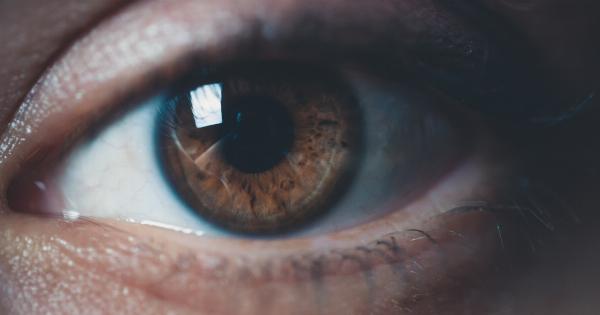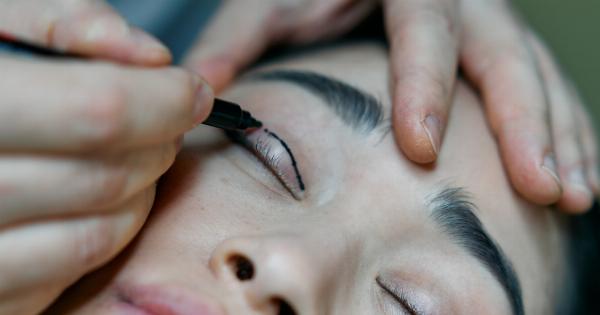Eye discharge is a common phenomenon among people of all ages.
It is the fluid that forms in the corners of the eyes or on the eyelids, and depending on its consistency and color, it could be a sign of something as minor as a bacterial infection or something more complex like a systemic disease. Eye discharge can also be a symptom of different types of allergens.
What Is Eye Discharge?
Eye discharge is a fluid that is produced in the eye to help lubricate and moisturize the eye. It is a natural part of the body’s defense mechanism and serves to keep the eye moist and clean.
When the eye produces more discharge than usual, or the discharge is thicker than normal, it can be a sign that something is not right with the eye or the body.
Common Causes of Eye Discharge
The following are some of the most common causes of eye discharge:.
Allergies
Allergies are one of the most common causes of eye discharge, especially in people who have sensitive eyes.
Allergic reactions occur when the body’s immune system overreacts to an allergen and produces excessive amounts of histamine, leading to itching, redness, and watery eyes.
Bacterial or Viral Infection
Bacterial or viral infections can also cause eye discharge. When the eye is exposed to bacteria or viruses, the body produces more fluid to flush out the foreign invaders, which can result in discharge.
Bacterial or viral infections can also cause redness, itching, and swelling.
Dry Eye Syndrome
Dry eye syndrome occurs when the eyes do not produce enough tears or when the tears evaporate too quickly. This can cause irritation and discomfort in the eyes, and may also lead to the production of excessive discharge.
Conjunctivitis
Conjunctivitis, also known as pink eye, is a condition that causes inflammation of the conjunctiva, the membrane that lines the inside of the eyelids and covers the white part of the eye.
It is a common condition that can be caused by bacteria, viruses, or allergies, and is often accompanied by redness and discharge.
Foreign Object in the Eye
A foreign object in the eye, such as a particle of dust or a piece of grit, can also cause eye discharge. The body produces more fluid in an attempt to remove the foreign object, which can result in discharge.
Not-So-Common Causes of Eye Discharge
While the above are the most common causes of eye discharge, there are some not-so-common causes as well:.
Styes or Chalazions
A stye or chalazion is a small, painful lump that forms on the edge of the eyelid. They are usually caused by a blocked oil gland, and can result in discharge, redness, and swelling of the eyelid.
Keratitis
Keratitis is an inflammation of the cornea, the clear covering of the front of the eye. It can be caused by a bacterial or viral infection, or by an injury to the eye.
Keratitis can lead to discharge, as well as other symptoms like eye pain, redness, and sensitivity to light.
Blepharitis
Blepharitis is a condition that causes inflammation of the eyelids. It can be caused by a bacterial or viral infection, or by a skin condition like rosacea. Blepharitis can lead to discharge, as well as other symptoms like itching, redness, and swelling.
Eye Tumors
Tumors in the eye can also cause eye discharge. While rare, they can cause a range of symptoms, including eye pain, blurred vision, and a feeling of pressure in the eye.
How Is Eye Discharge Treated?
The treatment for eye discharge will depend on the underlying cause. For bacterial or viral infections, antibiotics or antiviral medications may be prescribed. For allergies, antihistamines or eye drops may be recommended.
For dry eye syndrome, artificial tears or prescription eye drops may be used. In some cases, surgery may be necessary to remove a foreign object or to treat other underlying conditions.
Preventing Eye Discharge
Preventing eye discharge involves taking care of the eyes and practicing good hygiene. This includes washing your hands regularly, avoiding touching your eyes, and using clean towels or tissues to wipe your eyes.
If you wear contact lenses, it is essential to follow proper lens care procedures to prevent infections. It is also important to maintain a healthy diet, get enough sleep, and avoid smoking, as these factors can also contribute to eye problems.
Conclusion
Eye discharge is a common condition that can be caused by a variety of factors.
While some causes are more common than others, it is essential to seek medical attention if you experience excessive discharge or other symptoms like pain, redness, or swelling. By taking care of your eyes and practicing good hygiene, you can reduce your risk of eye problems and promote overall eye health.





















